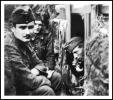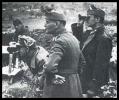
In the relatively treeless Don River valley, firewood often had to be brought in from good distances. After a heavy rain, the unpaved roads turned into a quagmire, making life miserable for both the Hungarian soldiers and their horses.
Érdekes képek - Kamovos 2010.11.25.






















